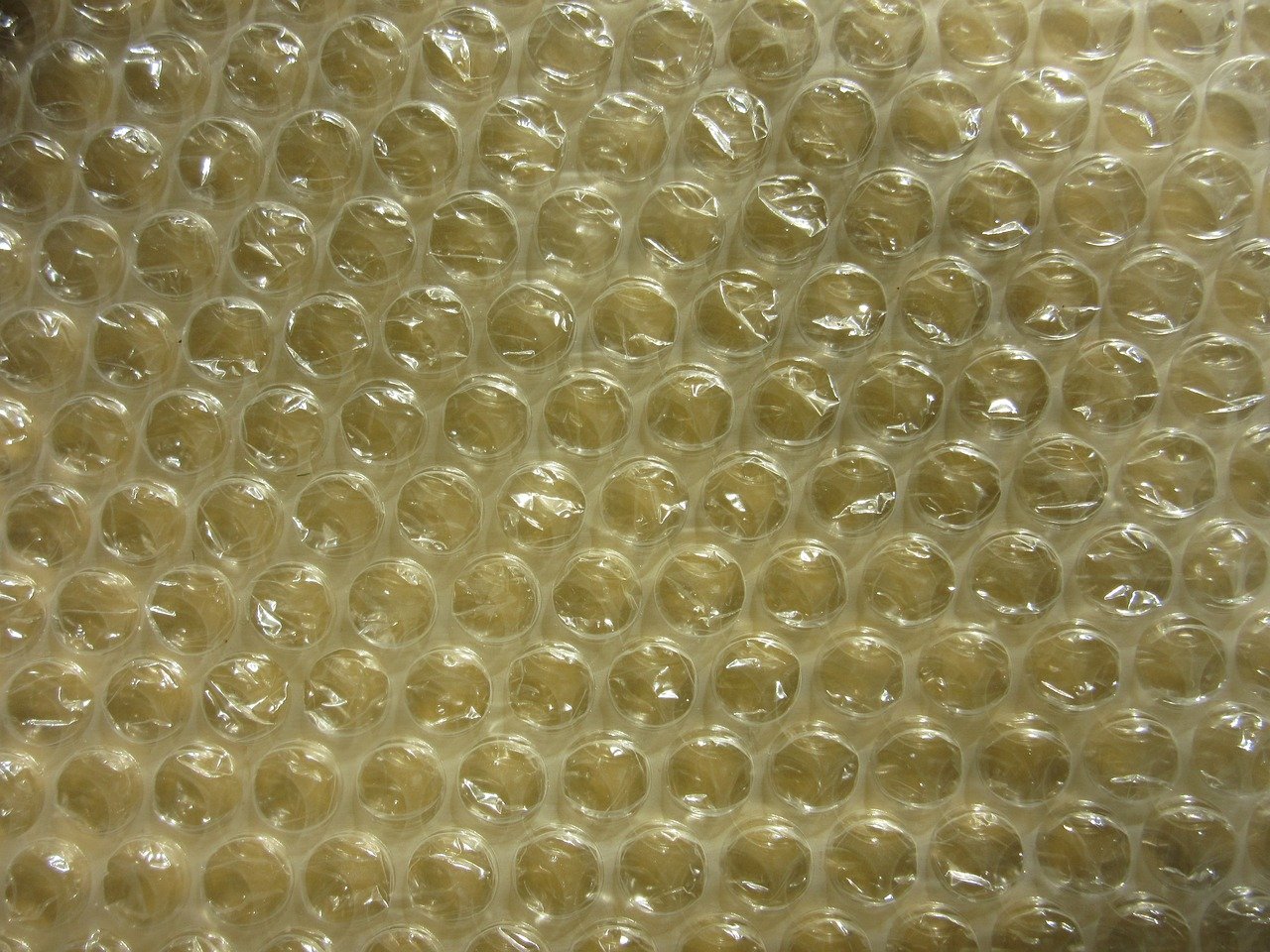We’re all working to make our choice of materials more sustainable. From individuals at home, right the way through to major global businesses, everyone is working to prioritise eco-conscious materials, and so minimise our impact on the environment.
Bubble wrap is an exceptionally versatile material – it features in a huge variety of products and, in countless packages, it is depended on to keep items protected during transit.
In fact, in the UK alone, a whopping 240,000 miles of bubble wrap is produced every single year.
But, the major drawback is that it is made of plastic. So, the big question is – how sustainable is bubble wrap?
Well, as with many plastics, the answer largely depends on whether or not it is recyclable.
Keep reading to find our complete guide to bubble wrap recycling, and our insights into how sustainable it is as a choice of packaging material.

What is bubble wrap made from?
Bubble wrap is made from plastic. Specifically, it is made from low-density polyethylene (LDPE). This material is commonly used in plastic packaging and plastic films, with clingfilm being another common example of LDPE.
Bubble wrap is made by heating resin beads, until they morph together into a single sheet of film. Then, the film is rolled flat, and holes are inserted into it. Finally, a vacuum fills the holes with air (to blow the ‘bubbles’) and it is cut into sheets.
Can you recycle bubble wrap?
Yes, it is possible to recycle bubble wrap.
However, this is commonly misunderstood. Most people assume that bubble wrap is non-recyclable, so send it straight to landfill.
This is because LDPE is one of the trickier plastic types to recycle. Plus, it can’t be recycled in a standard plastic recycling bin. Bubble wrap needs to be processed through a separate recycling facility, meaning consumers have to separate it from the rest of their plastics, and dispose of it in a specialist recycling bin.
But, this is not as tricky as it sounds. Since both bubble wrap and carrier bags are made from LDPE, you can recycle your bubble wrap with your carrier bags.
You can find specialist carrier bag recycling bins at waste management facilities, and even at most large supermarkets. As a result, it’s surprisingly easy to recycle bubble wrap.
What is the most sustainable way to use bubble wrap?
The most important way to use bubble wrap sustainably is by recycling it.
But, before you dispose of it, you can also reuse bubble wrap multiple times. This does not compromise the recyclability of the product, and it is a great way to maximise the lifespan of your bubble wrap, thereby keeping your environmental footprint as low as possible.
Alternatively, you might want to look into more eco-friendly, non-plastic alternatives to bubble wrap. Effective options include:
- Old newspaper or magazines
- Old fabric
- Starch-based (non-plastic) packing peanuts
- Packing paper
- Shredded waste paper (this is particularly effective for businesses)
- Compostable or biodegradable packaging materials
Remember, it is the responsibility of managers and business owners to keep their operations as sustainable as possible. It is their duty to manage any bubble wrap and other plastics that are used in their site, and ensure that they are correctly recycled.
This mindset is the best way to keep your businesses’ carbon footprint as low as possible. And, not only will this keep staff morale high, but such sustainability is critical to retaining the support of your customers.
So, if you would like to find out more about plastic recycling, including the recycling of bubble wrap, in your premises, or to create a bespoke waste management plan, the EnviroCraft team is on hand to help.
The post Can you Recycle Bubble Wrap? appeared first on EnviroCraft Waste Solutions.














